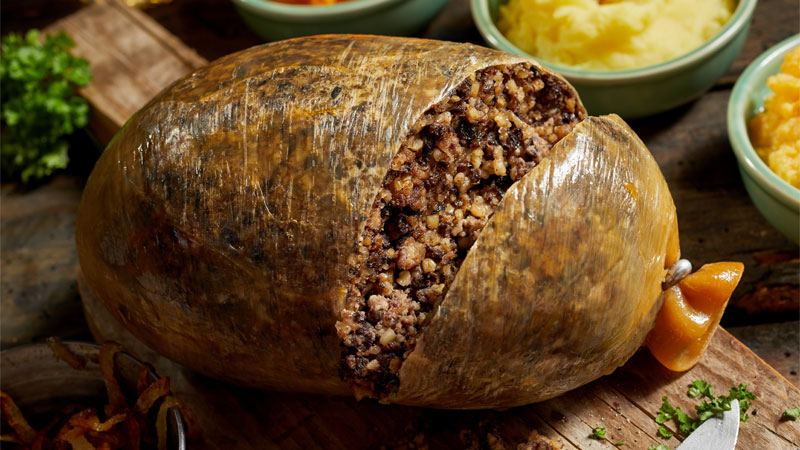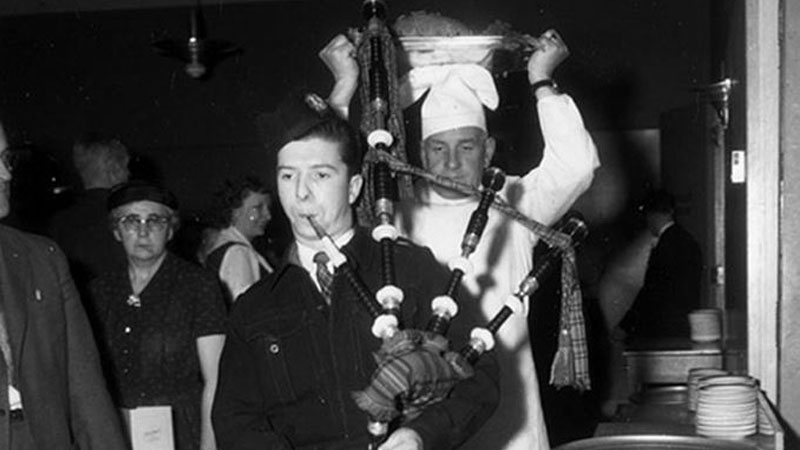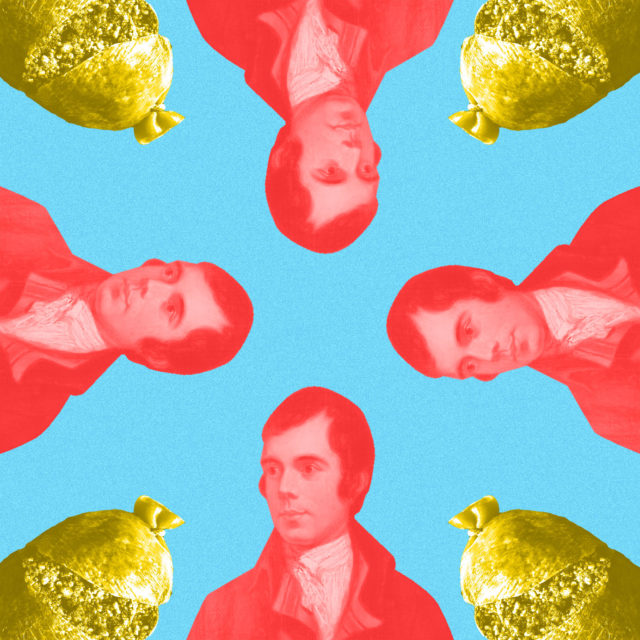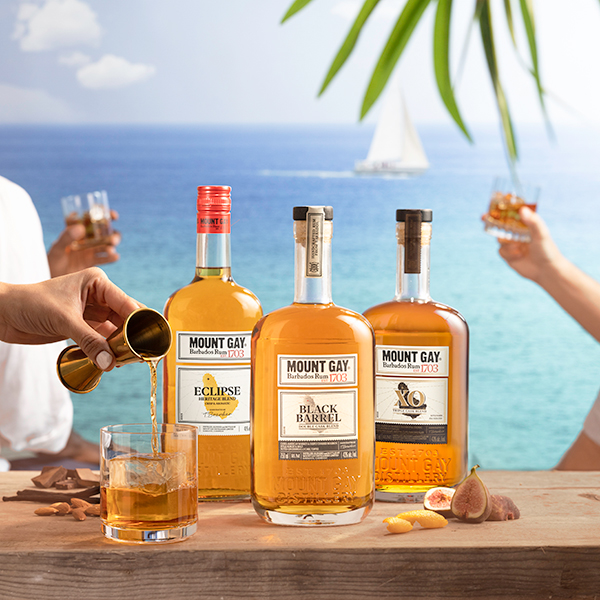“If you know anything about Scotland, you’ve no doubt heard of the kilt, Scotch whisky, the bagpipes, and, of course, the infamous haggis,” says Rory Glasgow, the wonderfully named, Edinburgh-born Single Malt Scotch Whisky Ambassador for The GlenDronach, The BenRiach, and Glenglassaugh.
Of course, knowledge of these pillars of Scottish culture does not equate to understanding, particularly in the case of the “infamous haggis.” In 2003, a poll of 1,000 U.S. visitors to Scotland found that 33 percent believed haggis was an animal. Incredibly, 23 percent said they’d come to the country thinking they could catch one.
For those still wondering, haggis is not an animal. Scotland’s national dish is a sausage-like preparation made of sheep’s “pluck” (heart, liver, and lungs), oatmeal, onion, suet, stock, and spices, all encased in the animal’s stomach. It’s an impossibly delicious preparation — earthy, savory, and spicy — perfect for a nation that experiences between 150 and 250 days of rain per year.
Like turkey on Thanksgiving or hot dogs on July 4, there’s a special occasion for savoring haggis. Known as Burns Night, or Burns Supper, every year on Jan. 25, Scots around the world unite to “address” the haggis while honoring the immortal memory of their most celebrated poet, Robert “Rabbie” Burns. It’s an event so quintessentially Scottish, not even the most vivid, haggis-hunting imagination could have dreamed it up.
“If you find yourself at a traditional celebration, the haggis will most likely be led in by an escort of bagpipers and then laid to rest in front of the guests,” Glasgow explains. “A speaker will then read aloud the ‘Address to a Haggis’ poem, written by Burns to pay homage to this magnificent dish.”
Written in Scottish dialect — “Fair fa’ your honest, sonsie face, Great chieftain o the puddin’-race!” — the poem celebrates all that’s wonderful about Scotland’s most famous dish over eight evocative stanzas.
A few verses in, the speaker pierces the haggis, declaring, “O what a glorious sight,” before pouring a generous splash of Scotch whisky onto the steaming platter of offal. After the address is complete, the speaker invites guests to raise their glasses and toast “the haggis!” before the dish is finally served with a traditional side of boiled-and-mashed turnips and potatoes (“neeps and tatties”).

Playing an important, supporting role in the ceremony, whisky’s inclusion is by no means arbitrary. “Burns’ love of Scotch whisky has been documented through the years,” Speyburn distillery manager Bobby Anderson notes in an email to VinePair.
When Burns wasn’t writing about haggis, he explains, the poet eulogized the distillation process in “John Barleycorn” and aired frustrations against the unfair taxation of the spirit in “The Author’s Earnest Cry and Prayer.”
“We honor his love on Burns Night with the most special and limited expressions from the Speyburn range to toast Scotland’s National Bard: Speyburn 18 Years Old,” Anderson writes.
Glasgow, too, opts for a special bottle for the occasion. For him, it’s a “toss up” between The GlenDronach 18 and The BenRiach 21. But selecting which whisky to drink is the least of his worries as a now California resident.
The difficulty with celebrating in the U.S., he says, is not only finding people who know about Burns Night, but searching for a location that’s hosting an event. “I’m lucky that in San Francisco there are some great Scottish clubs and societies that cater to such cravings,” he says. “The St. Andrew’s Society of San Francisco and the Caledonian Club of San Francisco and Oakland always hold great events celebrating the late great poet.”

But even in cities with Scottish societies, it’s not a given that there will be haggis on the table. Sheep lung, a major ingredient in haggis, was banned in America in 1971. Then, in 1989 following the BSE crisis, all British lamb imports became prohibited.
In 2014, a Scottish petition to lift the decades-long ban proved unsuccessful. “The Americans don’t know what they’re missing,” Scottish Secretary Alistair Carmichael said at the time.
The ban on haggis hasn’t stopped enterprising Scottish expats from making a buck or two out of the event. According to the United States Census Bureau, there are currently over 5 million Americans with Scottish ancestry. To maintain the Burns Night tradition this side of the pond, companies like North Carolina’s Scottish Gourmet produce U.S.D.A.-approved American haggis, substituting ingredients like grated poached beef liver for the illicit sheep lungs.
According to Scottish Gourmet’s co-founder, Anne Robinson, orders for Burns Night account for 90 percent of her company’s January sales. An Akron, Ohio native who’s married to a Scottish chef, Robinson says she cannot believe the demand. “I never would have dreamed that I’d be the queen of haggis,” she says.
Thanks to American haggis producers (Scottish Gourmet is among a handful), Scottish societies, and Scottish-owned restaurants that put on dedicated Burns Nights, expats and those with Scottish heritage can celebrate this and every Jan. 25 in (almost) exactly the same manner as those in Scotland.
“If you don’t find yourself heading out this year to celebrate Robert Burns, there’s nothing to stop you trying this fun event at home,” Glasgow says. “There are some great recipes online for haggis; equally as delicious, and much easier to make, is vegetarian haggis.”
Other aspects of the evening, however, are non-negotiable. “Don’t forget to end the night with a great and special dram in honor of Burns,” Glasgow says.

